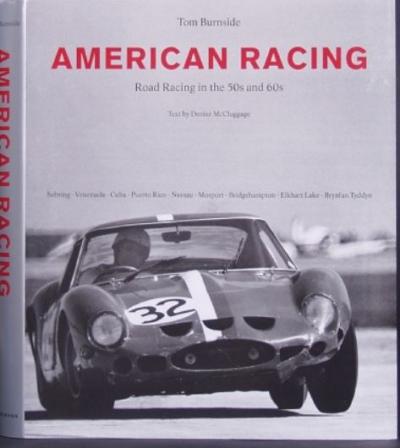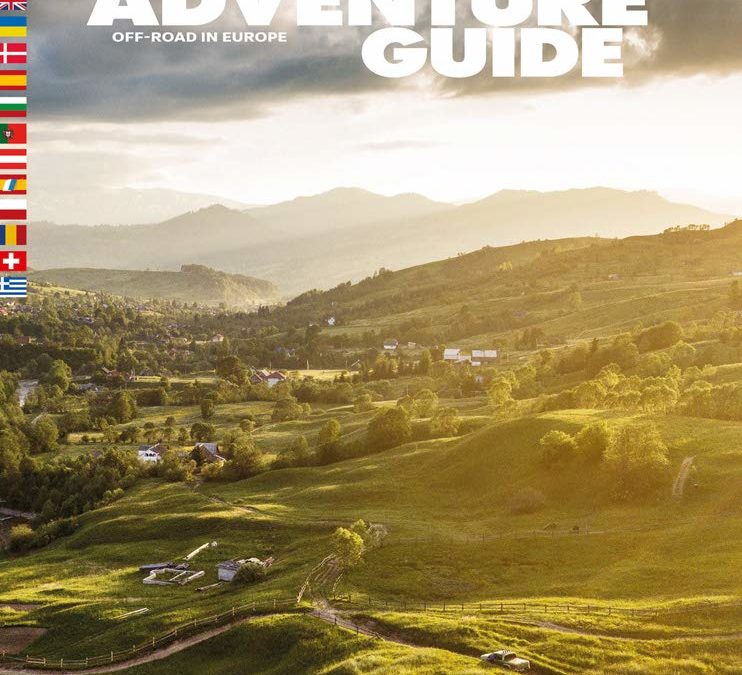
From Sweden to Gran Canaria, from the Ukraine all the way to Portugal: the Amarok Adventure Guide presents 16 exciting European off-road tracks with varying levels of difficulty
Whether it’s a tunnel inside a mountain in Bulgaria or a desert in the East of Germany: Europe offers exciting off-road tracks for adventurers in many different countries. The Amarok Adventure Guide presents some of the most beautiful landscapes along these routes. A professional team made up of the author, a photographer, a videographer and a professional off-road driver took a trip through 16 European countries. Their vehicle: the new Volkswagen Amarok. The results of this amazing tour can be seen in this book and watched on the internet.
This book provides useful information about the visited locations, excels in technical knowledge about the new Amarok and invites the reader to drive along the paths mentioned in this book. Including geographical coordination of each location as well as tips and tricks for a safe off-road experience, it functions as the ultimate bible for Amarok drivers.
21290
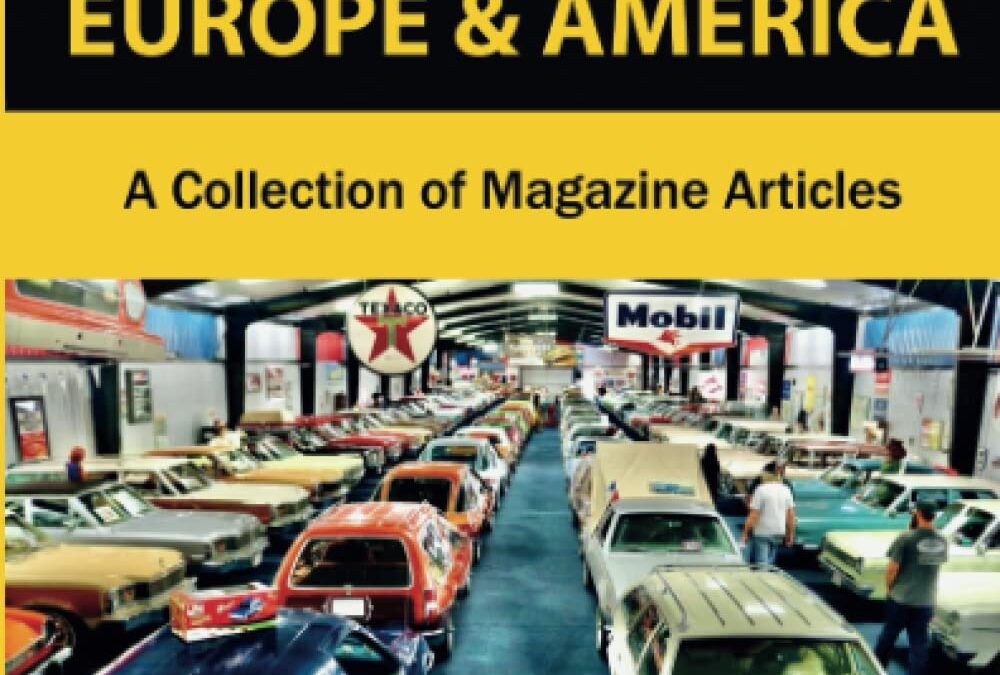
- Car enthusiasts will enjoy 75 Top Car Museums in Europe & America, a perfect companion to the author’s previous book, the Roadster Guide to America’s Classic Car Museums & Attractions.
- The collection of magazine articles about 75 leading car museums in Europe and America provides in-depth coverage of museums ranging from the Hellenic Motor Museum in Greece to the Petersen Museum in California.
- Side trips include Italy’s Museo Ferrari and the National Motor Museum in England while quirky cars are on display at the Trabi Museum in Berlin, State Police Car Museum in Rome, and the Cars of Socialism Museum in Bulgaria.
- Among the highlights in America are Michigan’s Gilmore and Henry Ford museums, Presley Motors at Graceland and two iconic LeMay museums in Washington.
- These articles were written by the author and previously published in leading car magazines including Hemmings Motor News, Classic & Sports Car, Octane, Classics Monthly, Classic Military Vehicle, and more.
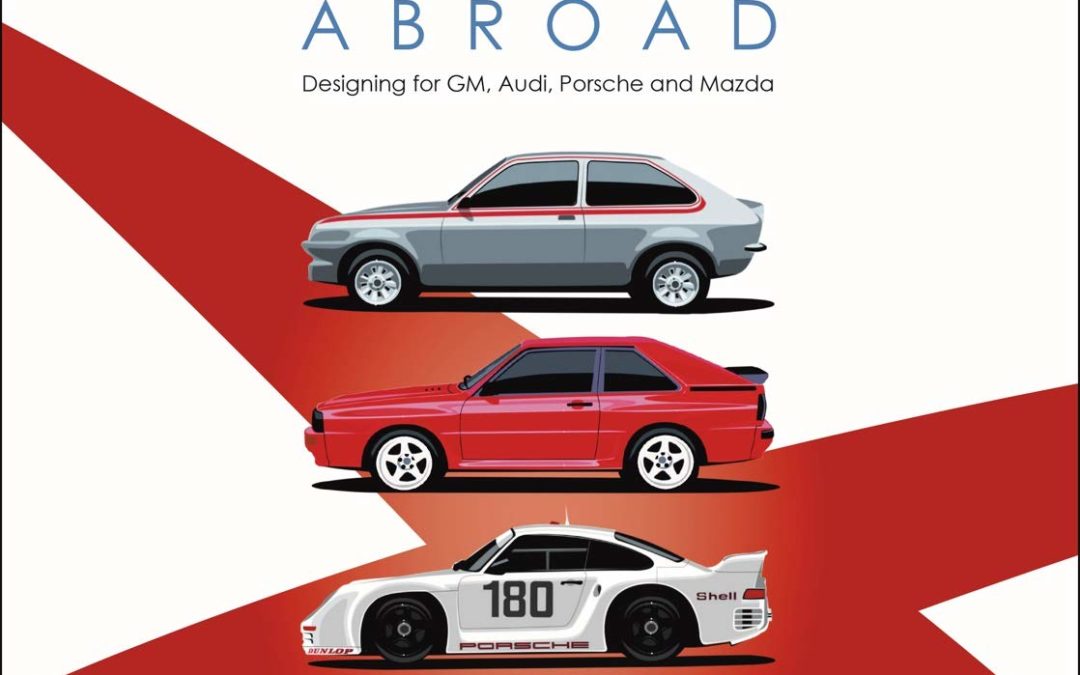
An English Car Designer Abroad is the humorous and personal account of a life spent working on the design of some of the world’s best known cars. Commencing his career as a designer at Vauxhall Motors, Luton in 1973, Peter Birtwhistle then left the UK in 1977 to take a position abroad, at Audi in Germany, where he lived for the rest of his working life.
From Audi, his career took him to Porsche in Stuttgart, and eventually, in 1988, to the Japanese company Mazda, with whom he would help develop a Design Centre close to Frankfurt, eventually becoming Chief Designer for Mazda Motor Europe. During his career, Birtwhistle was involved in the design of some very significant cars and in his work and travels, crossed the paths of many significant personalities from the car industry.
Car design has changed enormously since the time he commenced his career, and for Birtwhistle it was clear, his story needed to be documented before it was lost in time. Featuring original photographs and illustrations from the author’s own collection, this highly humorous and very personal story creates a fascinating collage of anecdotes and historical facts, not only from the secretive world of car design, but also his private life.

Inspiration and expert advice for planning and driving road trips around the world – including 50 suggested routes
Road Trip: A Practical Manual is aimed at inspiring readers to take a road trip, while providing practical advice to help them to do so. Whether looking at popping over to Europe for a quick circuit, hankering to drive the classic routes of North America, or even aiming to cover a clutch of African countries, there is something for everyone. Importantly, every road trip featured is possible without specialist equipment and, indeed, each and every trip could possibly be completed in a hire car – though for a select few a four-wheel drive hire vehicle would be advisable.
The author offers a wealth of advice from his experience taking road trips around the world. From hiring cars and paperwork, to what to take, driving laws, crossing borders and emergencies, the engaging text aims to give the reader confidence to fulfill his/her dreams.
The second part of the book provides a wide range of route suggestions, based on the author’s own experiences on six continents. Road Trip: A Practical Manual is a fascinating guide, which will, hopefully, inspire readers to turn their independent travel dreams into reality.
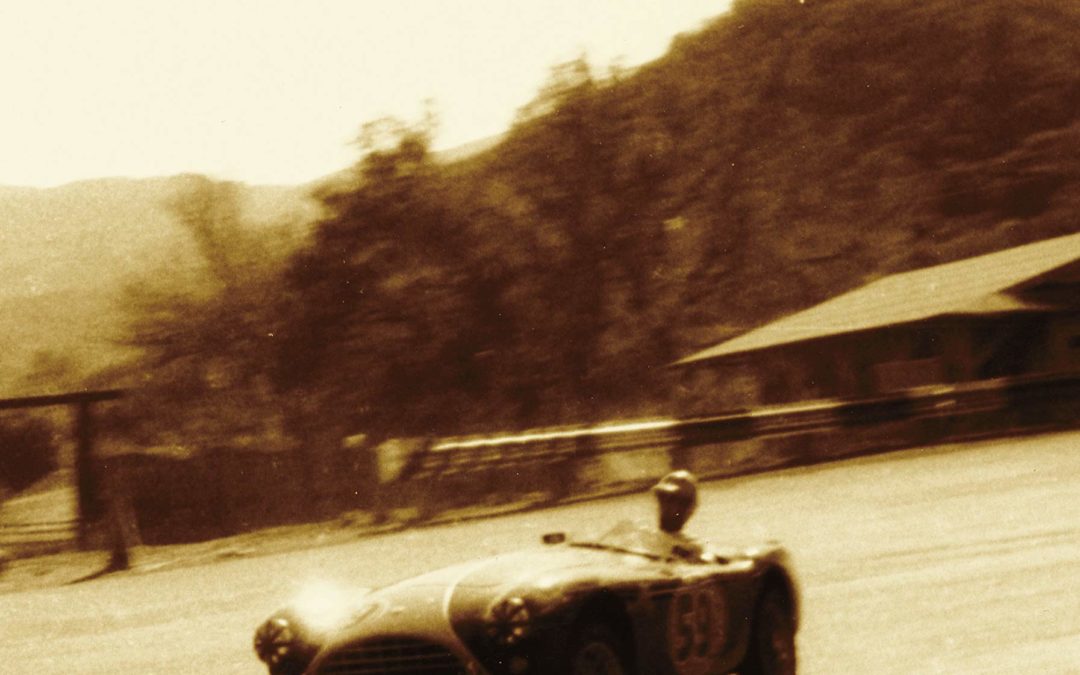
In California, the popularity of all kinds of motor sports reached its peak in the mid-20th century. None was more exotic or glamorous than the type commonly called road racing. Southern California Road Racing is a collection of historic photographs that depicts all the action and excitement of the golden age of motor sports. The images in this book will take you back to the days when the best cars Europe had to offer competed with homebuilt specials over world-famous road courses like Laguna Seca, Willow Springs, Glen Helen, and Riverside International, plus show all the cars and people that made it happen.
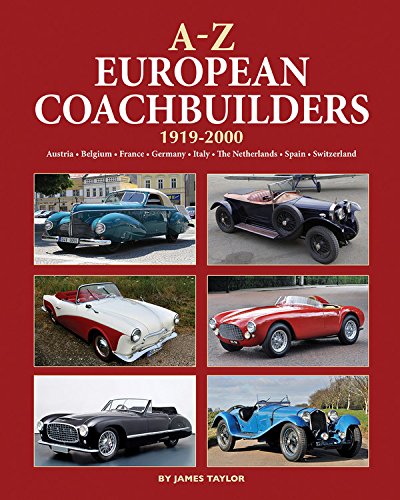
Coachbuilding is a subject of great fascination for many automotive enthusiasts, even though the golden age of individually coachbuilt bodies is now long in the past. From ACB of Paris (1934-91) to Zschau of Leipzig (1878-1939), by way of great names like Bertone, Pinifarina, Touring and Zagato, this is an alphabetical reference guide to the major coachbuilders of western continental Europe – Belgium, France, Germany, Italy, the Netherlands and Spain. The A-Z entries provide details of the history, activities and specialities of each coachbuilder, including the marques they bodied, while the book’s broad time span encompasses both the great era of hand-crafted bodies and the more recent field of conversions and special bodywork.
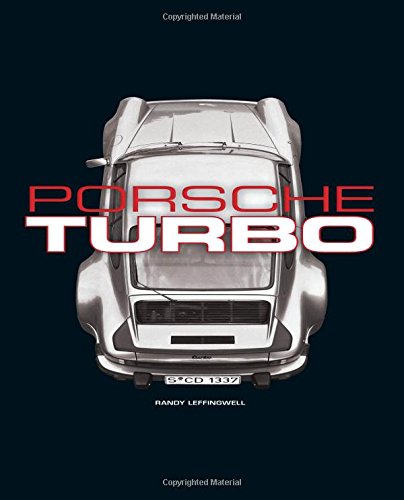
Celebrate the rebirth of the world’s most stunning high-performance automobile.
Porsche made history when it brought turbocharging to the racing world in the form of the 917. When strict regulations regarding engine displacement took away the option of bigger engines, manufacturers turned to forced induction. In its wildest trim, the original 12-cylinder turbocharged Porsche racing engine yielded as much as 1,400 horsepower! Porsche’s official philosophy was that racing cars must have a connection to street cars, so it was preordained that Porsche would eventually produce a turbocharged version of its air-cooled flat-six cylinder engine.
The resulting 930 Turbo appeared in the spring of 1975 in Europe. Acceleration from 0 to 100 kilometers per hour took a scant 5.5 seconds, and its top speed was 155 miles per hour. The Turbo’s distinctive rear wing let the world know that this was something very special. It was nothing less than the rebirth of the high-performance automobile. At a time when the big-block engines in America’s so-called “muscle cars” were putting out 180 horsepower and the engines in exotic supercars weren’t much more ambitious, the lightweight Porsche was a genuine rocket.
Porsche Turbo: The Inside Story of Stuttgart’s Turbocharged Road and Race Cars celebrates Porsche’s five decades of turbocharged supercar performance, both on the track and on the street. It covers all of the major racing cars as well as the turbocharged street cars, including the 930, 935, 924, 944, 968, 911, and Cayenne Panamera. Don’t let this one fly past you!
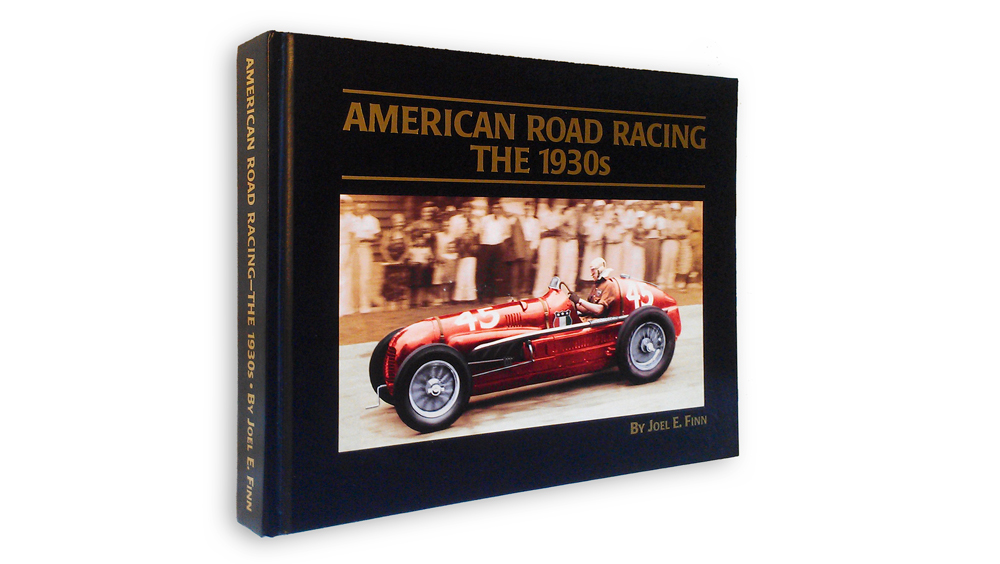
Road racing in the United States was born in the early 1930s with the founding of the Automobile Racing Club of America (ARCA). By the late 1930s the crude, home built jalopies racing on back yard dirt tracks, had given way to events that featured some of the finest examples of European thoroughbred automobiles racing on public streets and roads across America. Packed with more than 600 rare period photographs and illustrations, this tome by historian, author and racer Joel Finn is based largely on original documents from the archives of the Automobile Racing Club of America and lengthy interviews with its members and active participants in the sport.
With more than 600 rare period photographs and illustrations, 400pp, large format, and hard-bound cover, this is Joel Finn’s acclaimed history of road racing in the United States during the 1930s.
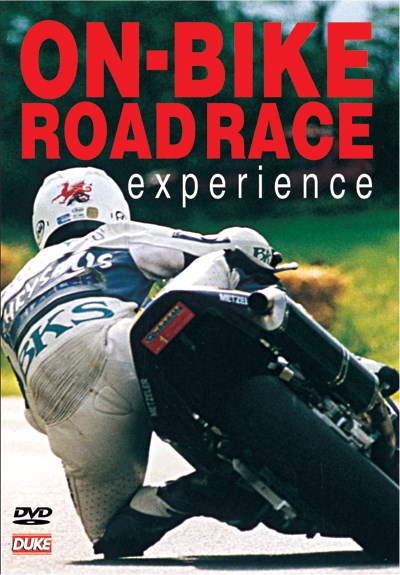
Ohe hottest compilation of on-bike road racing footage ever seen! Experience the thrill of riding with the world’s best racers in this dizzying full-on, action blast collection of the best on-bike footage ever recorded. Trees, hedges, houses and stone walls flash past at astonishing speeds. These guys don’t flinch. You will!
Get your leathers and racing helmet on for complete laps of:
THE NORTHWEST 200 – The fastest road racing circuit in Europe, nine miles of winding coast roads. Features Michael Rutter (Ducati 996) and Iain Duffus (Honda Fireblade).
THE ISLE OF MAN TT – World famous mountain circuit, 37.73 miles of endurance, speed, skill and total commitment, Starring David Jefferies (Yamaha R1), Blair Degerholm (Kawasaki ZX7RR), Nigel Davies (Yamaha R145), Iain Duffus (Honda Fireblade) and Steve Hislop (HOnda RC45).
THE ULSTER GRAND PRIX – Steeped in history the Dundrod circuit, set high in the hills above Belfast, is seven and a half miles of pure adrenalin! With the legendary Joey Dunlop (Honda RC45) and John Donnan (Yamaha R6).
THE SOUTHERN 100 – Mass starts on a pure road circuit, 4.25 miles long and fantastic speeds! On-board with Tim Leech (Kawasaki 750), Roy Hanks/Dave Wells (Yamaha 600 Outfit) and Blair Degerholm (Kawasaki 750).
This is the ultimate road racing experience – it’ll blow you away!
Extras exclusive to DVD include more on-bike with Mick Grant and Mad Sunday with David Jefferiesn-Bike Road Race Experience
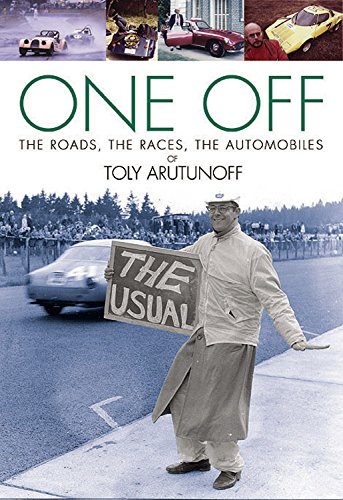
Amateur road racer, raconteur and car guy extraordinaire, Anatoly Arutunoff tells a lifetime of his favorite true first person stories. From his youth in Bartlesville, Oklahoma, to participation at the real Targa Florio, to eventually winning the SCCA runoffs in his Morgan 4/4, to more recent times on the historic rally circuit Toly makes you think you were there sharing all the adventures and camaraderie. There are intriguing family moments, the exuberance of youth and brushes with greats such as Redman, Clark and Moss plus many lesser known players from the past sixty years who collectively molded the sports car culture that has always surrounded the author. Written in an uncomplicated and light-hearted style the reader will either renew a relationship or discover a new friend in a man who suggests, “All the car stuff I’ve done is a sort of cross-section of what you would have done, if you’d been young in the sixties and had the money.” Ride with Toly on the roads and racetracks in America and Europe and share in an experience that is truly “One Off!”

The fabulous success of Ford’s Mustang in America inspired Ford’s British and German branches to do likewise. The sporty coupe they created, the Ford Capri, was launched in 1969 as the first joint production of the brand-new Ford of Europe. Billed as “The car you always promised yourself”, the Capri was a signal success with almost 1.9 million made when production ended in 1987. Its rakish lines, keen pricing and broad power offerings gave the Capri wide appeal not only in Europe but also in America, which imported the Mark I and II versions from 1970 to 1977 for sale through Lincoln-Mercury dealers. The Mark III for Europe followed in 1978. No paper tigers, these classy coupes were formidable rally and racing cars as this book’s illustrations reveal. A Capri insider, former Ford of Europe executive Karl Ludvigsen introduces the Capri saga and illuminates the many rare images from his world-famous Ludvigsen Library. A feast for fans of the Blue Oval, this book’s pages bring to life the exciting story of one of the best-loved Fords of all time.
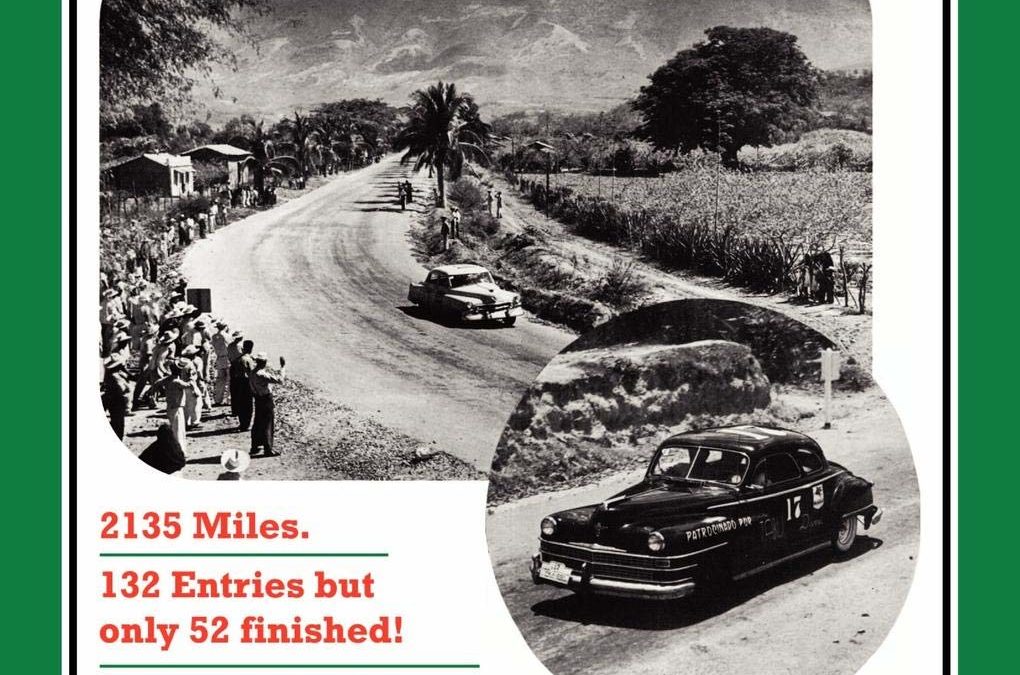
148 pages, 344 illustrations, size 8.25 x 11 inches. Why is this book considered by many automotive historians as the “Most Complete Account” of the 1950 Carrera Panamericana Race? When the inaugural “Carrera Panamericana” road race was run in 1950, there was very little coverage of the race printed in the contemporary press of the day. Most European publications totally ignored the race or perhaps they did not even know it was happening, and while a few US newspapers managed to print a paragraph or two on a daily basis, it certainly was not “front page” news and much of the information was questionable and sometimes inaccurate. Even the reports that appeared in the specialized “Auto Racing” magazines were sketchy at best, and it appeared that those magazines did not take the race too seriously, or attach any significance to the possible future potential of the event. Looking back, it was fortuitous that publisher Floyd Clymer secured the services of Roland Goodman, a US newspaper reporter living in Mexico, to cover the race in depth and to document all of the finite details such as the race statistics, accurate lists of the drivers, cars etc. Had the Clymer-Goodman relationship not happened, much of the history of the 1950 race would have been lost forever. All too often details become clouded over the years and the Spanish language custom followed by most Mexican parents of attaching the mother’s name after the father’s name such that the son Agustin of Mr. Garcia and the former Miss Lopez would be named Agustin Garcia Lopez and, at times, may be referred to as Garcia or Lopez, which makes for questionable interpretation of reports at a later date. In other words, you had to be there to get it right and Roland Goodman was Floyd Clymer’s “man on the spot” and our thanks should go out to both of them for creating this comprehensive record of the 1950 “Carrera Panamericana”.

Celebrate and explore 100 years of MG cars with this impressive volume featuring expert commentary, historical images, period ads, and contemporary photography.
For many car enthusiasts, MG is synonymous with “sports car.” It is often credited with igniting a passion for European cars in postwar America at a time when roads were otherwise filled with the lumbering output of Detroit. In MG’s native England, the company’s cars filled roles from family transport to competition driving.
MG, as we think of it today, began in the 1920s, but its roots go back even further with a young William Morris. Initially working in the booming bicycle trade, he eventually branched into motorcycle and car repair with the fledgling Morris Garage (hence, MG) in 1907. By the mid 1920s, the successful Morris Garages was in a position to begin manufacture of its own cars under the MG name.
MG grew significantly in the years before World War II, building and racing its classic Midgets and Magnettes. World War II provided challenging times for the company as it did for the UK and much of the world. In the postwar period, a focus on sales outside England, and particularly in the United States, both defined MG’s product line and ensured its success. Legendary cars followed, including MG TC, TD, and TF followed by thoroughly modern MGA, MGB, MGB GT, and Midget. Magnettes and the 1100 offered options for those wanting sedans and more practical cars.
MG ownership moved through a number of UK companies in the postwar period as well as ownership by BMW and today’s SAIC, a Chinese-based company through which it operates as MG Motor. Highlights along the way included the MGB GT V8, MG Metro Group B rally car, and MGF. Based on its latest state-of-the-art EV platform, MG will soon launch an all-new roadster coming full circle over its century in business.
Authored by marque expert David Knowles, The MG Century: 100 Years of Safety Fast! is a fitting celebration of one of the automotive world’s oldest and most beloved brands—and a must-have for every car enthusiast.
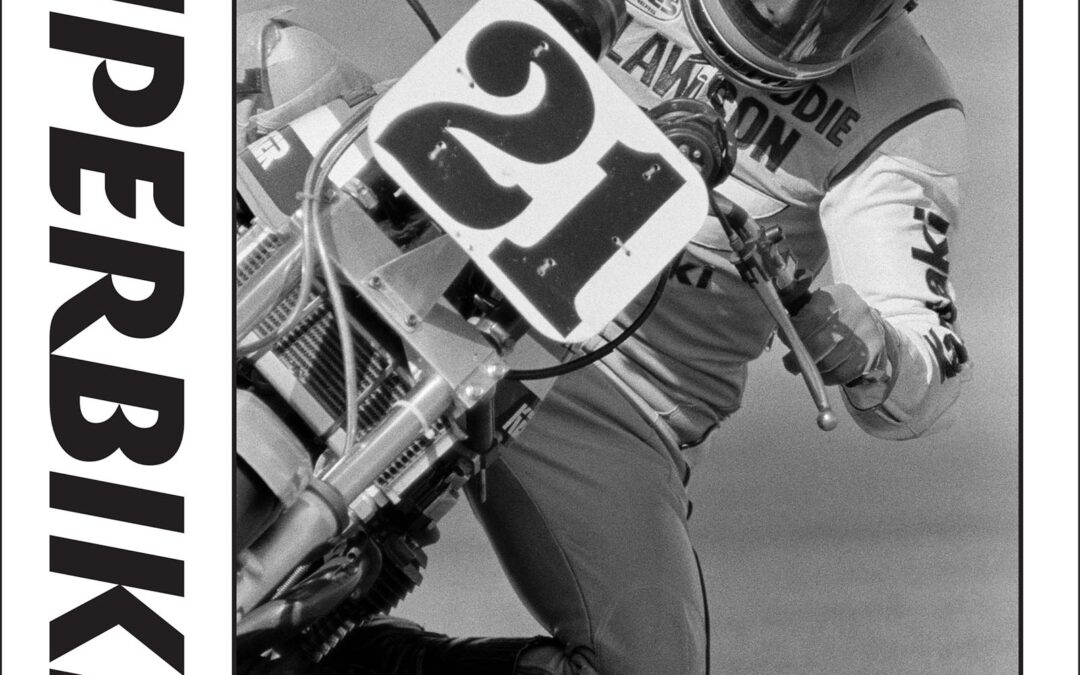
Superbike racing is a global business built on decades of dedicated partnerships among manufacturers, promoters and teams resulting in successful domestic and international championships. In the mid-1970s, however, this popular category of production-based four-stroke competition was in its infancy.
In “Superbike: An Illustrated Early History,” renowned technical writer Kevin Cameron and
acclaimed photographer John Owens chronicle the transition from the twin-cylinder BMWs,
Ducatis and Moto Guzzis set against wobbling and weaving first-generation Japanese fours to a
second wave of more raceworthy machines that ultimately led to the sportbike revolution.
Owens shot the black-and-white photographs published in this beautifully designed and
produced 192-page hardcover book at five of the tracks that dotted the U.S. motorcycle
road-racing landscape at the time: Daytona International Speedway, Bryar Motorsports Park,
Laguna Seca Raceway, Pocono International Raceway and Road America.
Eddie Lawson, Wayne Rainey and Freddie Spencer—three Americans who went on to win a
combined 10 250cc and 500cc Grand Prix world titles—figured prominently in the “sit-up” era of
AMA Superbike. Throughout the book, Cameron and Owens provide insights and images of
riders, crew members and machines difficult to replicate in today’s veiled paddocks.
“The desire to go fast, brake, turn and accelerate isn’t that complicated,” Cameron writes in the
opening pages. Yet this book clearly illustrates and uniquely explains the challenges that all
involved—from the manufacturers, to the teams and, ultimately, to the riders—faced in their
attempts to achieve those goals.
ABOUT THE AUTHORS
Kevin Cameron is a former tuner specializing in racing two-strokes and is widely recognized for
his ability to reduce deeply technical subjects to their elemental form. Kevin has written for
numerous publications. He has also authored several books on engineering and performance.
John Owens has photographed automotive and motorcycle competitions since 1975. John has
covered a range of events in the U.S., Europe and Japan, including the 24 Hours of Le Mans,
Indianapolis 500 and Daytona 500, as well as the Isle of Man Tourist Trophy races.
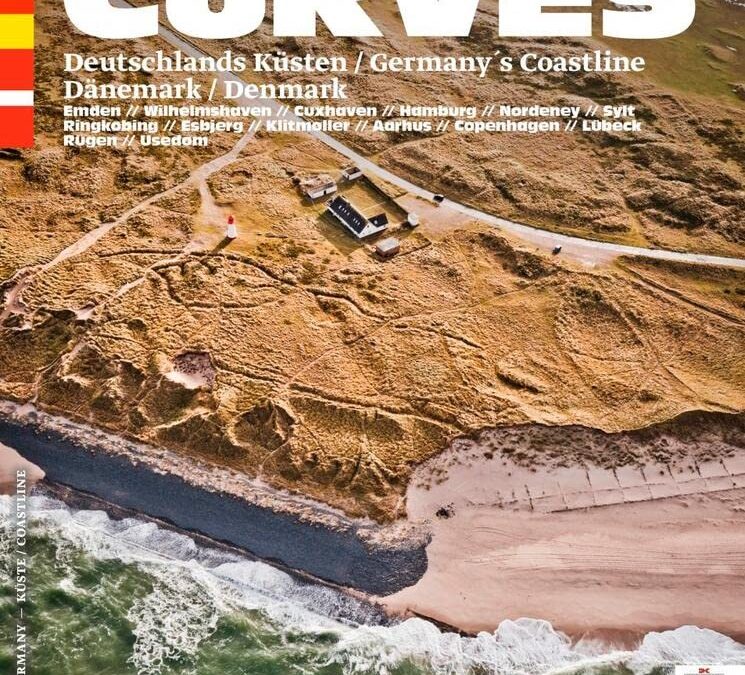
• Beautiful photographs portray the stunning coastal roads of Germany
• A new addition to a highly successful series
• Perfect tips for routes and sightseeing
You do not need to go to California for scenic coastal roads or relaxed cruising – not when you have that right on your doorstep in Europe. Instead of chewing gum, eating burgers and drinking Coca-Cola, your traveling companions will experience liquorice, tea and shrimp rolls – and, of course, Porsche. In the latest Curves volume, Stefan Bogner travels the German coastline from von Emden to Hamburg, visits the North Frisian island Sylt, and takes a trip to Denmark. From Klitmoeller he goes to Copenhagen and Lübeck. The journey comes to an end in between seaside resorts and chalk cliffs on Rügen, an island in the Baltic. Text in English and German.
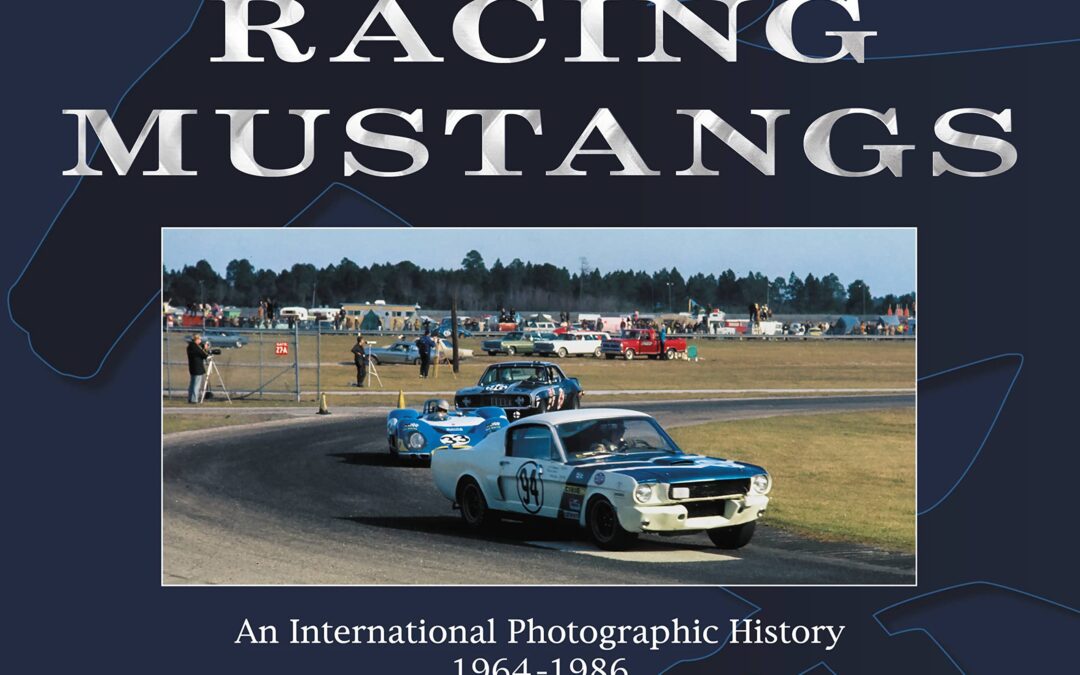
Virtually from the moment of its launch in April 1964, the Ford Mustang has been a favorite among road racers. From the Tour de France, to production sports car racing, the SCCA Trans-Am series, regional and national A/Sedan competitions, and international and domestic sedan championships in Great Britain, Europe, Australia, and New Zealand, the Mustang has enjoyed a following like few other models.
Racing Mustangs is a photographic celebration of road racing Mustangs throughout the world. It focuses on production-based cars, rather than the heavily modified tube-frame silhouette machines that began appearing in the late 1970s. Included are images of big-budget factory-supported cars competing in the Trans-Am series, right through to low-buck independents, and cars competing throughout the world.
Using only period images, including countless photos that have never before been published, this is a true photographic history, depicting the global popularity of the Ford Mustang as a road racing car.

The Places They Raced: Circuits of the Golden Age
WE’RE big fans of the style of this book, which simply has great pictures of pre-1918 circuit racing – be they photographs, slides or postcards – as well as brief captions. It’s an interesting look into the ‘golden age’ of racing.
European city to city races, Gordon Bennett Trophy
Consisting only of pre-WWI postcards of Renaults, Brasiers, Napiers and the like slithering over rutted muddy road circuits, this little hardback conveys the raw nature of early racing in spades. Many shots show the roads on non-race days, cluttered with chickens, bicycles and dog-carts, making it tempting for cartophiles to do some Google Earthing.
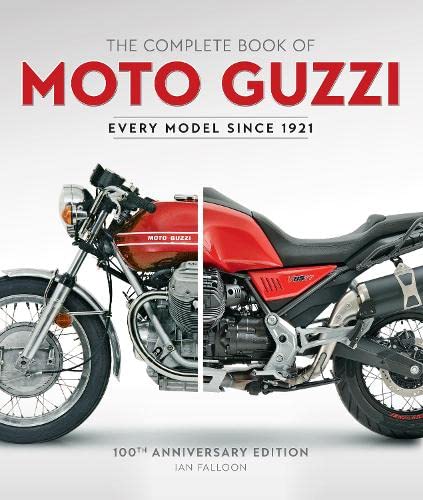
The Complete Book of Moto Guzzi: 100th Anniversary Edition, Every Model Since 1921, written by respected motorcycle expert Ian Falloon, offers enthusiasts a thorough review of Guzzi’s storied 100-year history via all of its production models.
The oldest European motorcycle manufacturer in continuous production, Italy’s Moto Guzzi has built some of the most iconic motorcycles ever produced. Established in 1921, the company is one of the most traditional motorcycle makers and also one of the most innovative. Carlo Guzzi’s first engine design, a horizontal single, defined Moto Guzzi’s road-going motorcycles for the company’s first 45 years. In the 1950s, Moto Guzzi experienced tremendous success in Grand Prix motorcycle racing. Today, Moto Guzzi has a higher profile than ever, thanks to its popularity among enthusiast celebrities like Ewan McGregor.
This new edition of The Complete Book of Moto Guzzi includes a 100th anniversary introduction, new photography, and additional pages to cover the newest models from 2018 to 2020. All of Moto Guzzi’s production models are covered in detail, including the groundbreaking Falcone, the V-8 Grand Prix racers, the V7 Sport, the Ambassador, the Eldorado, the Le Mans, the Daytona, right up to today’s the complete range of modern bikes including the V7, Griso, Stelvio, and V9.
Celebrate a century of iconic Moto Guzzi machines, model by stunning model.








